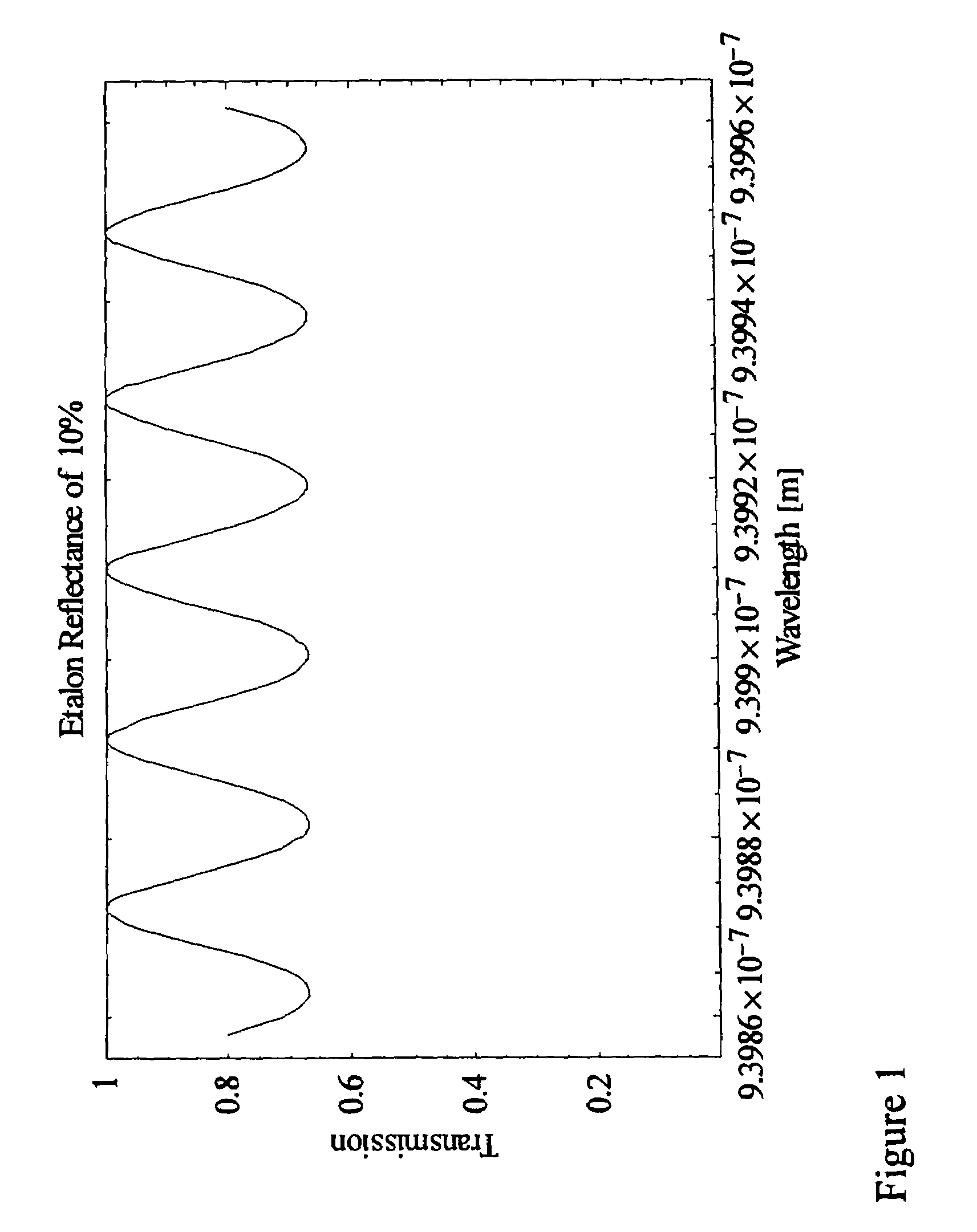Device for optical monitoring of constituent in tissue or body fluid sample using wavelength modulation spectroscopy, such as for blood glucose levels
a technology of wavelength modulation spectroscopy and optical monitoring, which is applied in the field of noninvasive or intravenous blood glucose monitoring, can solve the problems of preventing widespread use, escalating the risk of secondary aliments of diabetes mellitus, and invasive commercially available methods of monitoring glucose levels. , to achieve the effect of increasing the signal-to-noise ratio and reducing the calculation required
- Summary
- Abstract
- Description
- Claims
- Application Information
AI Technical Summary
Benefits of technology
Problems solved by technology
Method used
Image
Examples
Embodiment Construction
[0033]A preferred embodiment of the invention is described which provides a novel, cost-effective means of discrete frequency tuning and stabilization for semiconductor lasers. The principles of the experimental design are explored and the experimental apparatus is described. Preliminary data are given demonstrating the utility of the non-invasive technique presented here and showing indications of glucose absorption in the short-wavelength near infrared region of the spectrum.
[0034]Modulation spectroscopy is a relatively well-known technique; yet, its benefits have only begun to be realized. The most common motivation for employing modulation in spectroscopy is the noise reduction associated with coherent detection. While this is an attractive attribute, it is not the only benefit gained by employing modulation, particularly when the format is wavelength modulation. Wavelength modulation affords a host of additional advantages to be exploited in spectroscopic measurements, includin...
PUM
 Login to View More
Login to View More Abstract
Description
Claims
Application Information
 Login to View More
Login to View More - R&D
- Intellectual Property
- Life Sciences
- Materials
- Tech Scout
- Unparalleled Data Quality
- Higher Quality Content
- 60% Fewer Hallucinations
Browse by: Latest US Patents, China's latest patents, Technical Efficacy Thesaurus, Application Domain, Technology Topic, Popular Technical Reports.
© 2025 PatSnap. All rights reserved.Legal|Privacy policy|Modern Slavery Act Transparency Statement|Sitemap|About US| Contact US: help@patsnap.com



